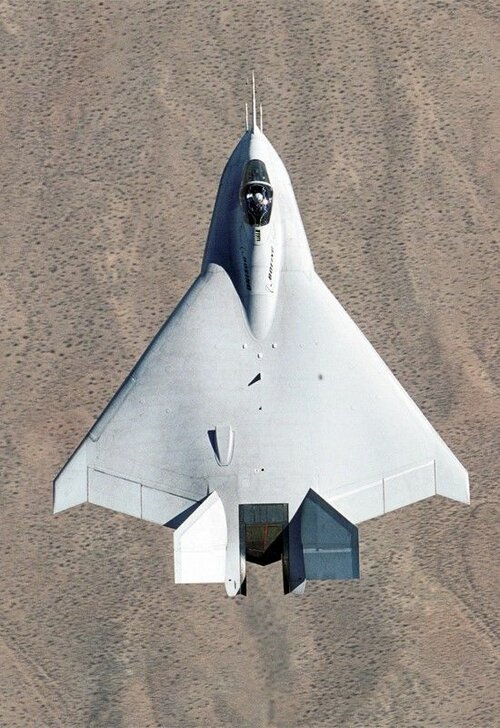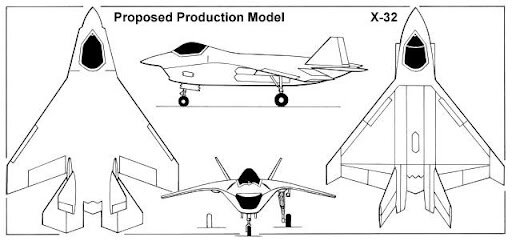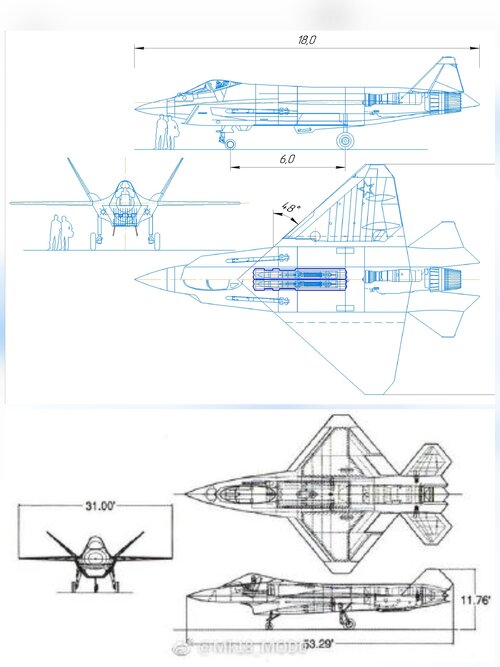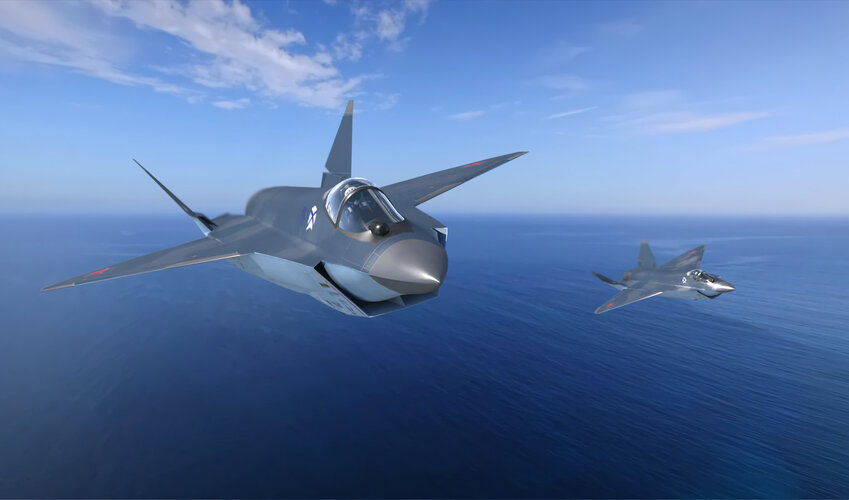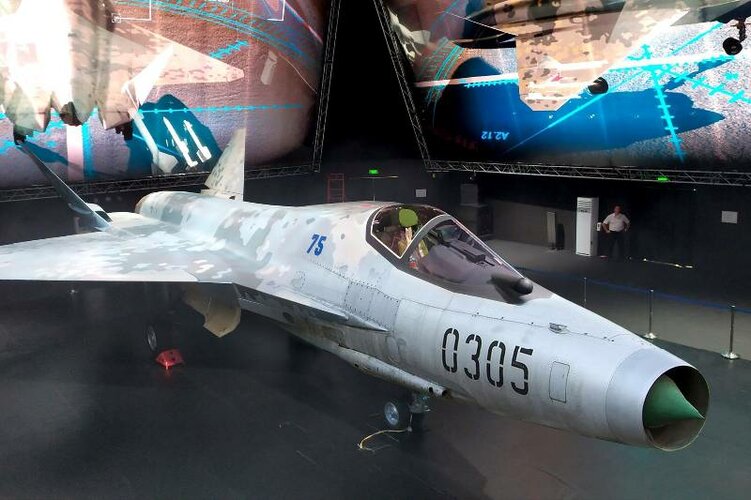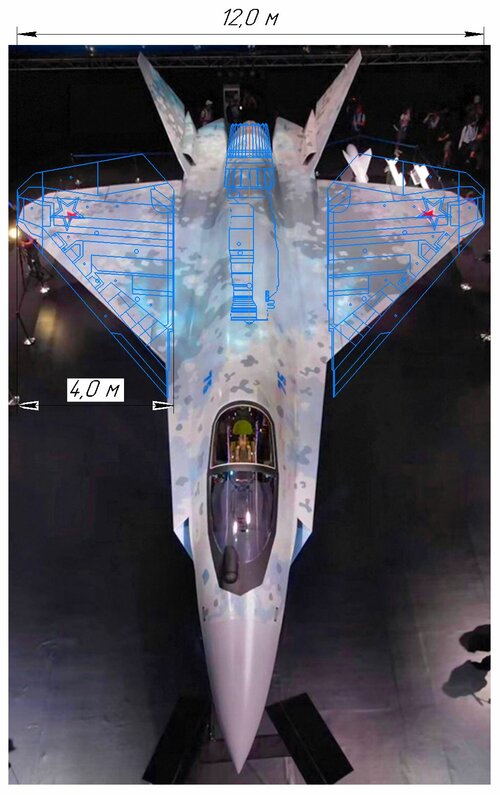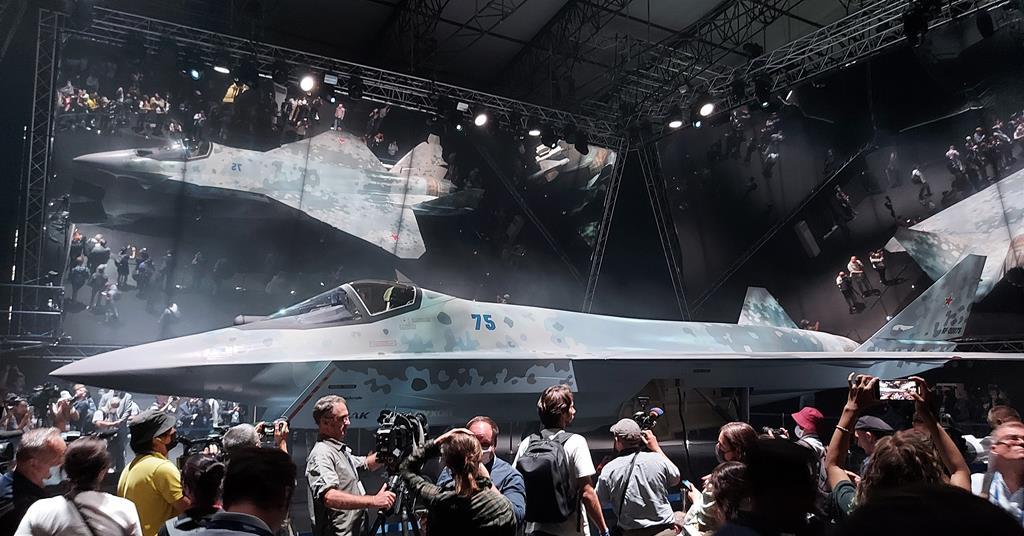Hmm, that aerodynamic layout still puzzles me.
The absence of horizontal tails in combination with those relatively little canted vertical tails is quite unique. I cannot recall any configuration out there with a comaprable wing / control surface layout. Even if those (presumably) split air brakes act as control surfaces as well I cannot imagine they would provide the same pitch control authority as full sized horizontal tails. Would it be viable without thrust vectoring?
Any thoughts?
X-32? It also relied on TVC. In comparison Checkmate actually has more pitch control potential, the fins are all-moving and it has the small trimmers that the X-32 lacks altogether. Could be all it takes in absence of a requirement to land on carriers (which is what drove the adoption of a h-stab in the F-32, IIRC).

